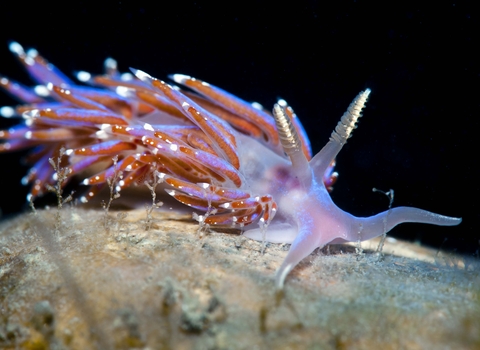
Nudibranch (Facelina auriculata) ©Alex Mustard/2020VISION
What is a Nudibranch?
Nudibranchs, also known as sea slugs, are much like their land-based relatives that you may spot in your garden. But, unlike your regular garden slug, the nudibranch can incorporate the stinging cells from their prey into their own bodies – giving them a defence against predators!
Scientific name
Over 100 different species in the UK’When to see
January to DecemberTop facts
Category
Stats
Length: Species vary in size from a few millimetres to several centimetres in length. The largest British species has been recorded at 20cm.Common
